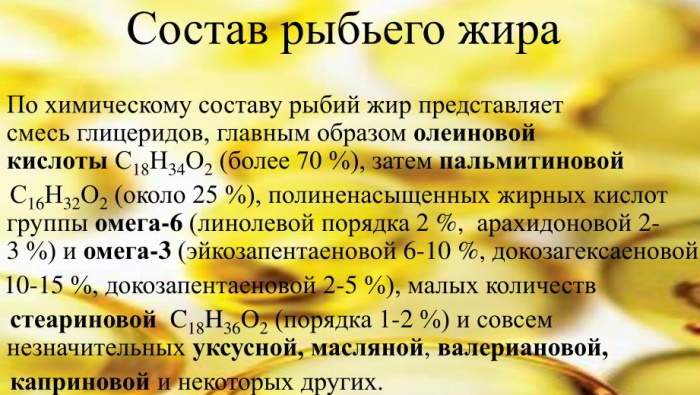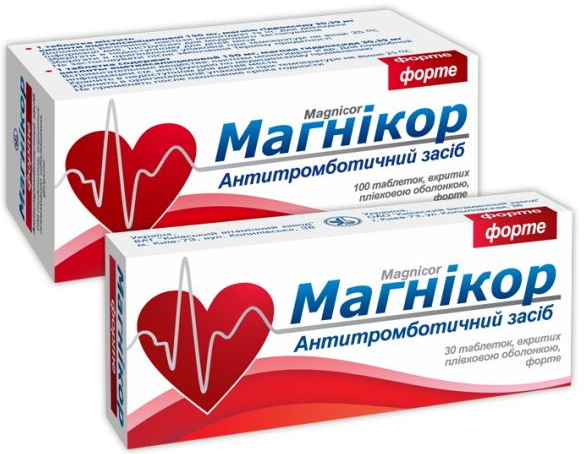It is in these areas of adjacent tissues can maximally displaced relative to each other. Bursa, as well as joint cavity, is lined with a synovial membrane special - they often communicate with each other.
the knee joint in the area there are about eight major bursae - four of them are located in the joint cavity closest. This infra, supra and prepatellyarnaya bags that are in the upper and lower part of the knee, the patella and over the so-called "goose" sac is located at the inner bottom area of the knee.

What it is?
Bursitis of the knee - is the process of an inflammatory nature, flowing in any of the prepatellar bags - podsuhozhilnoy, subcutaneous or podfastsialnoy.
Causes of
Near the knee is three bursa filled with liquid. Inflammation of periarticular bag can cause several main reasons:
- Injury - inflammation may be due to torn ligaments, sprains, fractures. Traumatic bursitis can also cause the work connected with a constant load on the joint. In the category of risk are construction workers, military, professional athletes. Post-traumatic bursitis treated well enough.
- Infection - cause inflammation, most often the staphylococcus. As a result of the progress of the disease there is an increased accumulation of purulent secretions. Purulent bursitis requires prompt treatment, since it may lead to amputation or total organism sepsis and ends in death.
- Accompanying illnesses. Often a precipitating factor may be gout, arthritis, etc. Often pathology develops into a chronic, permanent form.
Symptomatology of the disease has a distinct character and depends on the location and intensity of inflammation.
Classification
Bursitis maple, depending on the anatomical location is the following classification:
| Prepatellyarny | located in front of the patella, the most common type of knee joint disease, most often occurs after an injury. |
| Infrapatelyarny | affected shell below the kneecap and often occur from falls on the knee. |
| Suprapatellyarny | is formed above the kneecap. |
Depending on the pathological changes of the disease is a form of:
- Acute, manifested by a sharp inflammation of the articular membranes, painful process lasts up to a month.
- Subacute, dull pain and edema decreases.
- Chronic, symptoms increase gradually, the development of the pathological process takes place about one year.
- Recurrent, appears under the influence of adverse factors for the health of the patient.
The most dangerous complications of the disease may be a manifestation of osteomyelitis, followed by the formation of fistulas and blood sepsis.

symptoms
Bursitis of the knee joint has the following symptoms (see. Photo):
- Inflamed and stiff joints strong. Especially when pressed on the affected area;
- Sore joints can hardly move;
- Over the affected joint becomes red and swells the skin;
- Swollen knee is increased by 8 - 10 cm;
- There is muscle weakness;
- The person feels weak, it can not work properly;
- Bursitis knee causes an increase in body temperature;
- bursitis of the knee makes itself felt is usually at night.
When the above symptoms it is important to see a doctor for advice, to early treatment of the disease.
How does the knee bursitis: photo
The photo below shows how the disease manifests itself in humans.

Diagnostics
After the inspection the expert shall appoint additional diagnostic procedures. it is recommended to pass the following types of diagnostic surveys to identify the causes of bursitis:
- X-ray examination.
- Anamnesis.
- Ultrasound examination.
- Heat TV.
- Lab tests.
- Puncture of the knee joint synovial fluid intake.
- Magnetic resonance imaging.
Such inspection is necessary for the differential diagnosis of knee diseases with similar symptoms: synovitis, arthritis, tendon rupture, osteomyelitis.
Than to treat bursitis of the knee joint
Treatment of bursitis of the knee joint, as a rule, carried out by conservative methods. In some cases, it requires surgery. It shows the development of purulent process that pharmacological never treated. They are only exacerbated in this case, the patient's condition.
The therapy of bursitis of the knee should be followed and the general measures. These include:
- Time limit active movements affected limb
- If the inflammation is very pronounced, it is recommended that a person generally lie before remitting disease
- Using crutches when walking, which allows to spare the affected leg
- Do not bandage the knee
- Renounce the use of heat and cold treatments, have a negative impact on the natural knee joint tissues.
Conservative treatment of the knee bursitis involves carrying out treatment in the following areas:
- The fight against inflammation
- Improving the nutritional and metabolic processes in the periarticular tissues
- Carrying out of rehabilitation therapy after struggling with an acute process. This will restore the lost function of the knee joint.
Anti-inflammatory treatment includes the use of the local destination, and common action. Topical therapy, which helps reduce the severity of the inflammatory response involves the appointment of ointments and Dimexidum solution. Last improves the penetration of active components in the fabric, so increasing the therapeutic efficacy. The most commonly used ointments bursitis of the knee are:
- Fastum gel
- Diclofenac Gel
- Debt and others.
They must be applied to the lesion twice a day - morning and evening. Rub until dry, and the massage movements are not recommended. After rubbing is applied with gauze compress Dimexidum for several hours.
Nonsteroidal anti-inflammatory drugs are used as a method of the general anti-inflammatory direction. However, they have certain contraindications that restrict the use of these funds, namely:
- Ulcerative lesions of the gastrointestinal tract
- Individual intolerance to the drug
- allergic reactions
- Aspirin-induced asthma.
Trophic therapy is indicated after a decrease in severity of signs of inflammation, primarily, reduction in pain and swelling. As part of this trend shows:
- Therapy magnetic fluxes
- Using laser energy
- Electrophoresis aqueous Dimexidum
- ozokeritotherapy
- paraffin
- Use of nicotinic acid, B-complex vitamins and antioxidant
- The use of bio-stimulating agents, which include aloe, FIBS, solkoseril.
Rehabilitation therapy for bursitis of the knee include:
- exercise therapy
- Massage
- Balneotherapy.
Local anti-inflammatory therapy is carried out also using injections of corticosteroids. This manipulation should only be performed by trained physician. If the patient has no contraindications, the topical administration of corticosteroids do not be put off. Tolerability of these preparations with this method of application is good, and practically no side effects. Corticosteroids can achieve the following effects:
- Rapid relief of inflammation
- Prevention of chronic bursitis
- Rapid restoration of normal functioning of the knee.
Corticosteroid medications series are divided into two classes:
- Fast-acting drugs, such as Tseleston, Hydrocortisone
- Long-acting, e.g., Diprospan.
To reduce the severity of pain in one syringe doctor is gaining not only a corticosteroid, but also a local anesthetic. This greatly improves portability procedure. The duration of treatment is determined individually and may range from 5 to 10 procedures.
Surgical intervention
Bursitis of the knee joint, which treatment had no effect, may require surgery intervention in the form of aspiration (suction) of the contents of the joint capsule and the introduction into it corticosteroids.
This procedure is carried out using a thin needle under local anesthesia. After draining the joint capsule doctor may enter into her hormones - corticosteroids. This is necessary in order to stop the inflammatory process. Then it is necessary to continue carrying elastic bandage and ensure the long limb rest (usually 48 hours). This treatment is far more effective than treatment with medications (non-steroidal anti-inflammatory drugs), since tablet form have a general effect on the body, often without penetrating inside joints.
In rare cases the treatment is ineffective, and the only option is surgical removal prepatellyarnoy joint capsule. Restoration of normal joint function after such an operation takes place within a few days, return to normal life, without restrictions of physical activity may be carried out at 2-3 week.

Folk remedies
To reduce the unpleasant symptoms of the knee bursitis can use the popular methods:
- Compress salt. On half a liter of boiling water you need to take a tablespoon of salt. The solution draws liquid from under the skin. Wet coarse wool cloth in the solution, remove and attach the swollen knee. On top of a hot compress zamatyvaem film and a warm scarf or shawl. The procedure lasts for 3 - 8 hours. Held once per day until complete disappearance of edema. Usually, only one week to completely get rid of the disease.
- Regular sugar used in the following way - warm sand on a clean a dry frying pan, preventing its dissolution. After the sugar properly heated, its shift in linen bag and applying means to the patient knee. For longer heat preservation bag top cover with foil and warm woolen shawl or scarf. In the morning remove the wrap, soaked sugar discarded, the following procedure is carried out with a fresh batch of sugar. The course of treatment lasts until complete recovery.
- Vegetable packs. Potatoes, beet or cabbage cut into circles and spread on a clean cloth, which is applied to the affected joint. Top is wound a plastic bag and a warm cloth. Morning wrap must be removed. The important point! These vegetables are recommended to alternate until the bursitis is not completely cured.
- Lotion with propolis. 10 grams of propolis pour regia (150 ml) and allow to stand for 5 days. After a time, apply lotion to the swelling until they completely dissolve.
- A decoction of burdock root. 15 grams of the plant should be boiled for 5 minutes. Let sit and make a compress for a couple of hours for 20 days.
- To strengthen the body and increase its resistance to inflammation of the finished drink celery. Take a large spoonful of seed plants, their pour 250 ml of water brought to a boil and insist tea for 2 hours. Then drink filtered drinking it should be in the morning and evening hours. The duration of treatment is 14 days.
- Flax seeds are put in a bag of printed cotton and apply to the affected joints. Duration of treatment - two weeks.
- Repel cabbage leaf and attach to a patient joint. Insulate. Compress to do within 7 days.
Before starting treatment of folk remedies it is important to consult a doctor. The doctor, having assessed all the symptoms and the patient's condition, tell what innovative ways to help defeat the disease in your particular case.
Festering and neglected pathology treated only under medical supervision!
recovery
The rate of recovery knee mobility is largely due to the efforts of the patient. To shorten the period of rehabilitation, it is necessary to exercise, play sports.
It is necessary to abandon the occupation, leading to the formation of the joint microtrauma. At this stage, effective folk remedies: infusions and compresses, reduces puffiness.
To date, a viable alternative to traditional methods of treatment do not exist. Traditional methods can only be used as an adjuvant that promotes a rapid recovery of the patient.

prevention
Preventive measures consist in:
- Elimination of all inflammatory processes in the body;
- the gradual strengthening of the lower extremities ligamentous apparatus;
- rejection of jerks during sports, heavy physical exertion;
- weight control;
- at elevated traumatic - the protection of the knee joint with special devices;
- possible to avoid low temperatures on said zone;
- if necessary, being in the position "on my knees" - every hour to perform a warm-up.



